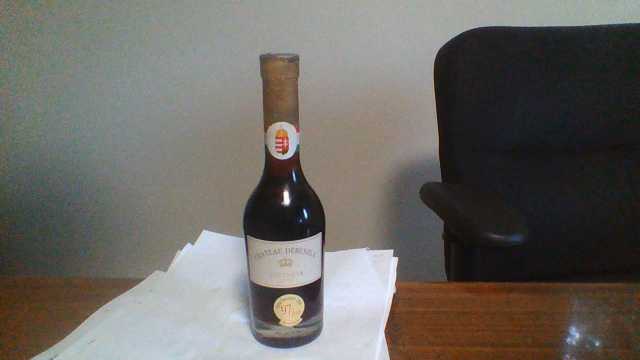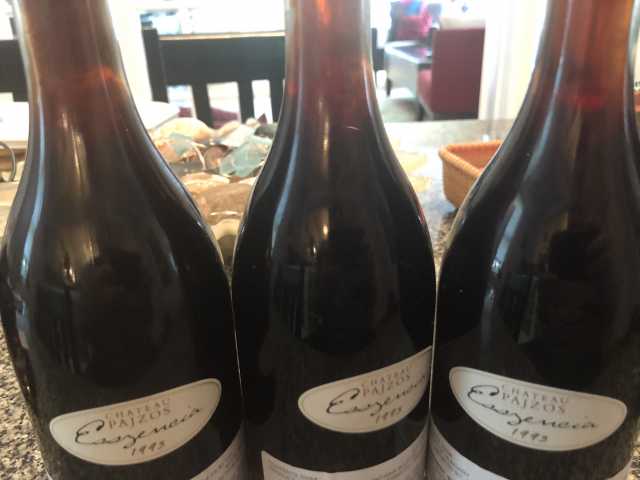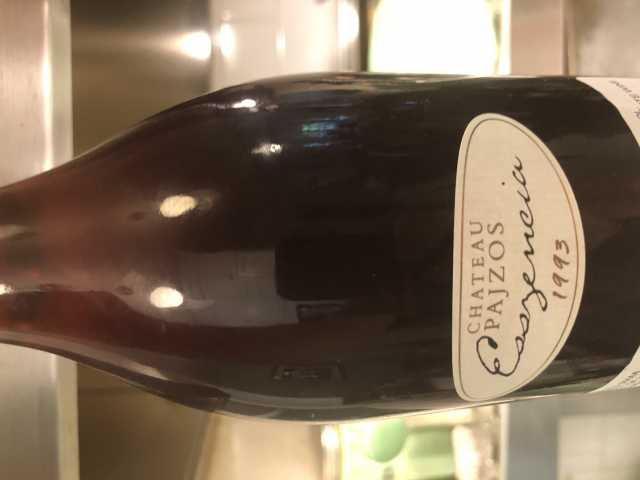Just bought this from a reputable reseller. The color seems quite advanced for such a relatively young wine. Any thoughts would be appreciated.

Seems to be an issue. I’ve had a couple bottles like that. Same vintage. There was apparently an oxidation problem. Haven’t asked them about it but plan to.
Thanks Greg.
Check out the youtube video of Jamie Goode spooning up 1999 and 2000-both really dark, but he seems to like them.
My sales rep says no complaints yet about 2000 Dereszla. She claims the dark color is due to oak ageing and high sugar.
Not at all. No complaints because people don’t know what it’s supposed to be like and if you compare it to some of its peers, some bottles, not all, are darker. To me, different bottles aging differently is indicative of a problem.
It’s one of the best value wines out there and I’m not slamming them, but I have had bottles side by side an one is dark and the other still golden. Has nothing to do with sugar - most of the reps don’t know anything about those wines so I wouldn’t put too much stock in what they say.
The oak aging means what? Oxidation? There was a school of thought that that was the “traditional” method. Then others felt is was only the traditional method because the communists were too stupid and lazy to do it right. After 1990, Royal Tokaj was one of the very few that kept that style, which is why it was always popular with the Brits and ignored by the Hungarians. But they’ve changed in recent years with a new wine maker.
Ironically, so have others. I think it’s impossible to know whether the “tradition” was oxidized or not, but given hygiene in the 1800s, I would imagine maybe it was. That said, Derezsla is really an up to date producer and their wines should be more consistent. Oak aging and sugar are irrelevant. I have Sauternes from the 80s that are not as dark, and bottles of Derezsla from 1999 and 2000 that are inconsistent.
As to Jamie’s video, the whole idea of Essencia is a little silly. It’s not drinkable. It is only bottled separately now because of marketing potential - it used to be put back into the aszu wine, which makes more sense.
looks way too dark.
I wonder if the darker color is more associated with raisins than apricots. I would be disappointed if that were the case.
Despite the color, which showed a dark amber, this was a wonderful experience, not flawed at all. A whiff of raisin on opening, but soon settled into the fruit profile I love in Tokaji. Huge and syrupy in the mouth at first, then freshened and lightened by strong acidity. A remarkable essence of smokey apricots lingers in the mouth. So rich that a few tiny sips are enough. This is a serious wine that every lover of Tokaji should try.
I think this is the normal color and darkness for a 18 yr old Essenzia. I bought some 1993 Pajzos which were all similarly dark on release which was about 4-5 years ago or so.
Interesting.
Check out the bottles on Tokaji Essencia. It looks to me like some old bottles are much lighter than mine.
How was the Pajzos?
I’ve been in Hungary the past few days and have had some time to think about all the classes of wine in Tokaj, Eszencia included, as this is really the first time I’ll be buying in any kind of quantity. Have to agree that Eszencia is a marketing gimmick, at around 3% alcohol it’s more a novelty than anything. Especially in these days that most of us are managing sugar, and are more aware of its effects, it’s just a hard drink to rationalize, though it does sound cool.
I’m happy to have tried it, but I don’t see myself buying a whole lot of it.
I bought some 1993 Pajzos which were all similarly dark on release which was about 4-5 years ago or so.
That wine is sui generis but not really representative, although really interesting as a memento of a time that will never be repeated. I talked to the wine maker and a number of other locals about it years ago and while a lot of them were resentful, in a way it did a lot of good for the area as a whole.
They can’t bottle “real” essencia because it is thick and gritty, full of bits and particles of grapes. To bottle it, they have to filter it, which also loses a lot of the sugar juice. It’s cool to try, but really not wine. The epitome of the wine is the 6 Puttonyos, which these days is better than ever.
Robert - cool that you’re over there. How long?
We were poured this at a restaurant in Houston last week. 2000 Essencia. It was dark, way darker than I have seen and smelled like it was old as well, maybe musty. Wonder what has happened to this wine. We sent it back for a Climens.
The 1993 Pajzos is really good. Everyone I offer it to seems to like its viscosity and aromas. It is beyond sugary sweet. Too much will leave you with a scratchy throat.
Im not sure what you mean by never to be repeated because I think Pajos bottled a 1999 and 2000 Essenzia that seems similar to the 1993.
It won’t be repeated because it was done at a time when not all of the wineries were ready to take advantage of the harvest they had that year. Remember, it was only a couple years after communism. The first stainless steel fermenting tanks had just come in and most of the old communist era wine making apparatus was still intact. Pajzos was able to get additional grapes because they had French investors and had more money than most of the locals and the laws and regulations were still in flux. That’s why there’s so much 1993 Pajzos around and not much from anyone else - they weren’t able to take advantage of the bounty because they didn’t have the infrastructure yet. There were a handful of wineries with foreign investment and a handful that had serious local expertise, but it would take a few years before the rebuilding and new investments were going to be ready.
There were a handful of wineries with foreign investment and a handful that had serious local expertise, but it would take a few years before the rebuilding and new investments were going to be ready.
Have you had much experience with, or do you know much about or the 1993 Royal Tokaji Aszu Essencia, Greg?
Thanks.
That wine is a little different but you won’t see that again either. While the highest designation was the 6 Puttonyos, in the communist era the wines were very debased so they came up with a new designation called Aszú Essencia, which would have been around 7-8 Puttonyos and then they had the free run sticky residue called Essencia. Some people used to distinguish the two by spelling them differently, which was pointless.
That wine is no longer made. They’ve gone back to the tradition of 6P being the highest designation.
Royal Tokaj itself is kind of interesting. They had Hugh Johnson involved as a minor partner, as well as a number of other outsiders. I guess because it’s what the Brits knew, the wines were made in an oxidized kind of style, somewhat reminiscent of the communist-era wines. So the British wine press praised them and the Hungarians weren’t as enthusiastic. But maybe they just preferred that style - I don’t really know and I don’t know anyone there. But they have great vineyards - some of the best in Mad, which is a small town in the Tokaj region. And in recent years they’ve changed their style and adopted a fresher approach, so their 1993 wine is another of those that you won’t see again, but it’s interesting from a historical perspective, and it’s a pretty good wine. I’ve never seen one that isn’t fairly oxidized though and part of that may very well be the Furmint grape.
Here are my 93 pajzos esszencia bottles. Super dark as you can see.


Thanks, Greg, for the good information about the '93 Royal Tokaji Aszu Essencia. Do you have a suggestion for its peak-drinking-window? I have one bottle.
![]()
I drank 2 of the 93 Pajzos, in 2012 and 2017. They were identical as near as I can tell. I’m not sure if they evolve at all, or if they do it is at a glacial pace. So peak drinking is probably any time in the next 75 years. Color was pretty much as seen in Chris’ pics. Sweet, aromatic and complex.
